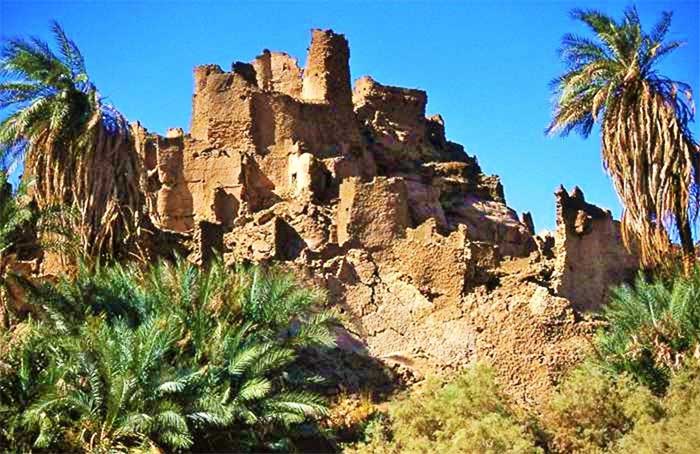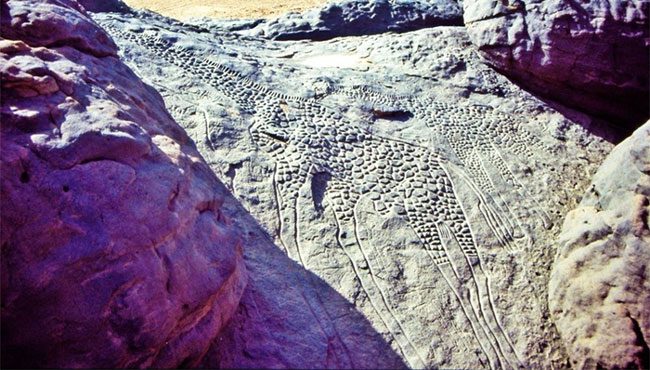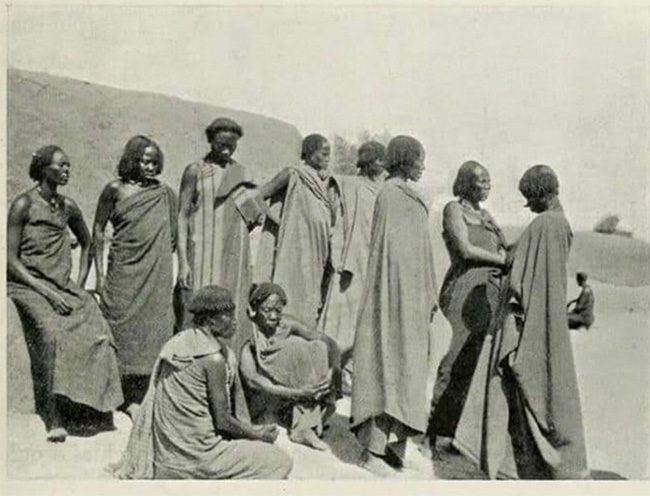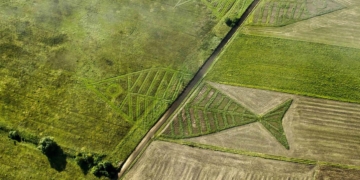The Sahara Desert region in Northeast Niger (Africa) is a land that remains largely beyond human understanding.
Its towering sand dunes present formidable obstacles to overcome. However, amidst this seemingly lifeless expanse lies the remnants of a large city filled with mysteries.
The Fortress City in the Highlands
The city of Djado, named after the plateau where it was discovered, features several recognizable structures reminiscent of neighboring cultures, although many of its buildings remain enigmatic to archaeologists.

The fortress city of Djado.
This city is believed to have been built approximately 800 to 1,000 years ago, during a time when the area was still moist, lush with forests, and had fertile land. While some information about the inhabitants of this region in the past is known, it remains uncertain whether they were the builders of this city.
In North Africa, there are scattered settlements known collectively as “ksar”, featuring homes constructed from palm trunks, surrounded by a layer of unfired clay. Over time, the sun and desert winds dry them out, making them as hard as iron.
The fortress city of Djado is one such settlement. What sets Djado apart from most similar ksar is its enormous size. Rising from the desert, the city stands out against the surrounding landscape, encompassing a vast area, serving both as a fortress and a trading hub along routes heading towards Libya.
The Kanuri people in the Sahara Desert are the last known inhabitants of Djado. However, there is no evidence that they constructed this grand edifice, leading to the belief that they may have inherited the city from an unknown civilization.
Due to its favorable location and pleasant climate in the past, the Djado plateau has witnessed human habitation long before the city was established. Scientists estimate that humans have lived on this plateau for about 60,000 years, leaving behind rock art and other signs of their presence.
Early agriculture and animal husbandry also left traces at this site. Goats and sheep were herded here as early as 7,000 BCE, with the first settlements being established.

Rock art depicting the prosperous era in the Djado plateau.
Many rock paintings found in the Aïr Mountains in this region date back to 3,500 BCE to 2,500 BCE. They depict a landscape vastly different from today, showcasing a verdant area with sprawling vegetation and a variety of wildlife, including giraffes, elephants, and many other large animals.
During the construction of the ksar, ancient peoples were attentive to temperature changes and the harsh conditions of the region, so the abandonment of Djado does not imply it was destroyed.
The key reason the Kanuri people seem to have abandoned their homeland city appears to be the lack of a clean water supply. As the lush landscape transformed into desert, fresh water turned brackish, making the environment too harsh for anyone to live there.
Who Built It?
Isolated from the world and designed to withstand the desert environment, most structures of the fortress city Djado still exist today. Its walls stand tall and proud, with many buildings remaining nearly intact, lacking only their roofs.
However, accessing this ancient city is currently a challenge for archaeologists. This region of the world is highly unstable, with tribes fiercely conflicting over limited resources. Future excavations may shed light on who built the great city of Djado, allowing us to begin to understand the people of this lost Sahara culture.
The Kanuri, believed to be the last residents of Djado, currently reside in the nearby desert village of Chirfa. Each year, they return to their ancestral site to harvest dates, which somehow still grow around the ruins. The Kanuri may be remnants of the Kanem Empire, a great civilization that ruled the central Sahara from approximately 700 to 1,300 CE.

The Kanuri, the last residents of Djado.
However, the origins of this empire are little known, and there is not much information about their early centuries of reign. It remains unclear whether Djado was built during this period or if it actually predated Kanem.
If the Kanem Empire constructed Djado, excavations at this site could reveal much about this mysterious culture and provide insights into their beginnings. But if they merely inherited Djado, we may be fortunate to uncover a new culture, preserved and hidden in the arid desert.





















































